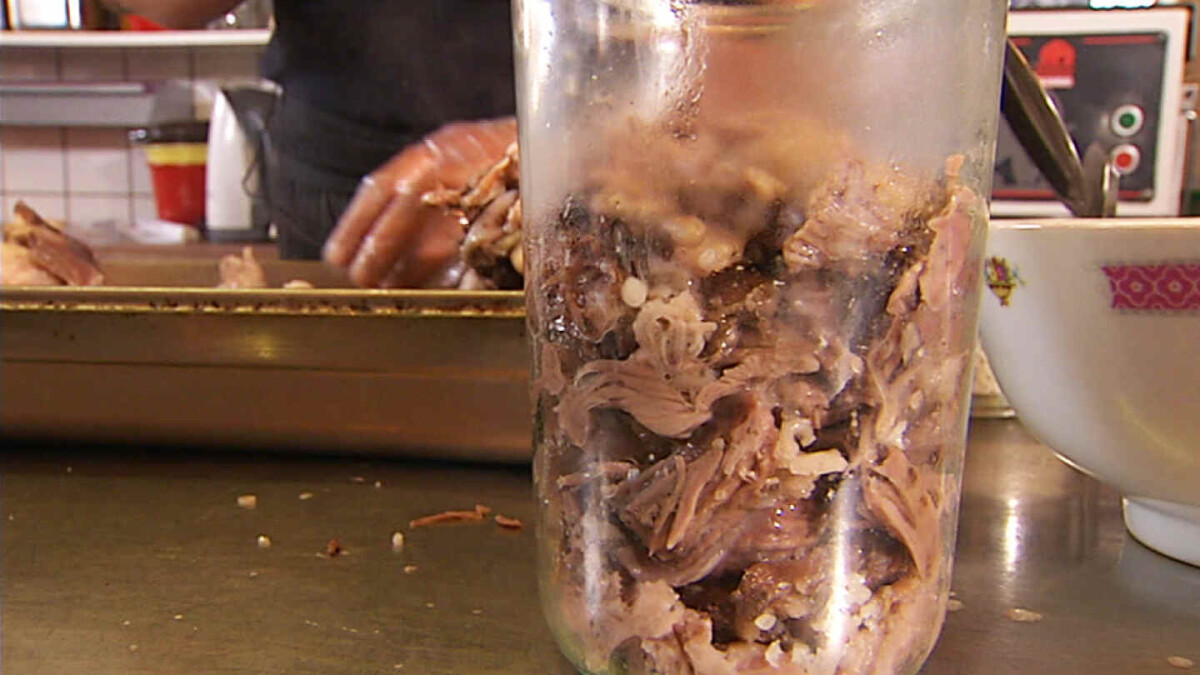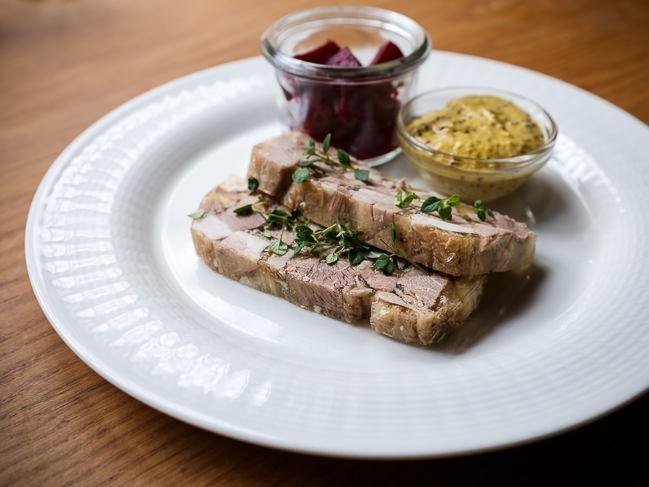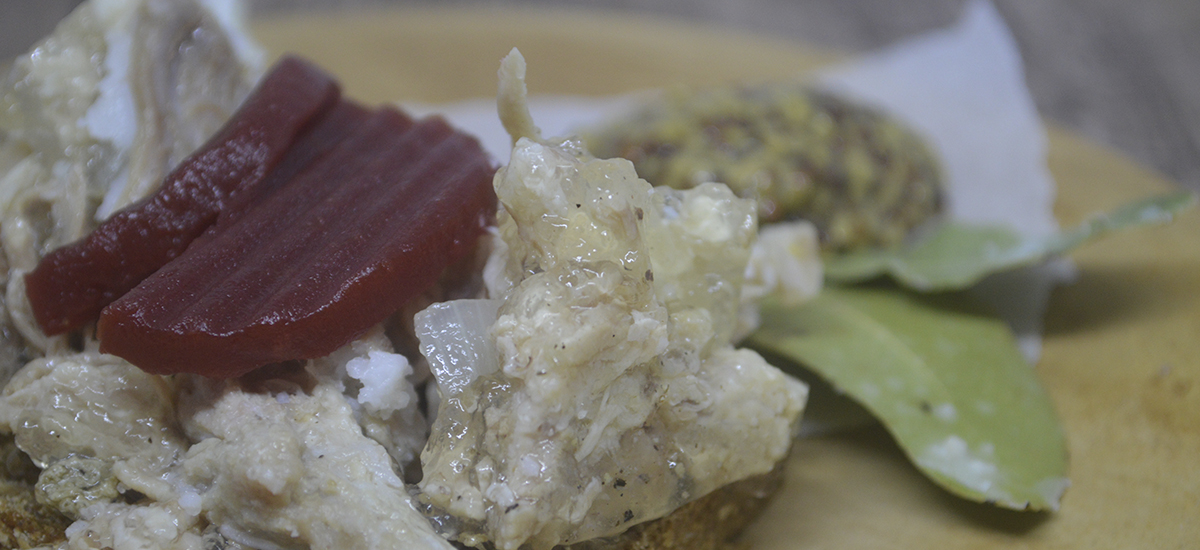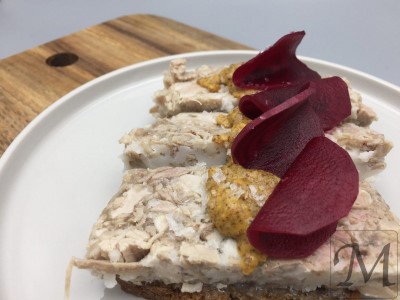Sylte
sylta, sylteflesk, sylterull, head cheese
Head cheese or brawn is a meat jelly or terrine made of meat. Somewhat similar to a jellied meatloaf, it is made with flesh from the head of a calf or pig (less commonly a sheep or cow), typically set in aspic. It is usually eaten cold, at room temperature, or in a sandwich. Despite its name, the dish is not a cheese and contains no dairy products. The parts of the head used vary, and may include the tongue but do not commonly include the brain, eyes or ears. Trimmings from more commonly eaten cuts of pork and veal are often used, and sometimes the feet and heart, with gelatin added as a binder. Variations of head cheese exist throughout Europe and elsewhere, with differences in preparation and ingredients. It originated in Europe, perhaps ancient Romania. A version pickled with vinegar is known as souse. Historically, meat jellies were made of the head of an animal, less its organs, which would be simmered to produce a naturally gelatinous stock that would congeal as the dish cooled. Meat jellies made this way were commonly a peasant food and have been made since the Middle Ages. Earlier brawns heavily featured spices and herbs, but beginning in the eighteenth century, the amount of seasoning was reduced. Contemporary brawn now features minimal spicing, usually sage, and perhaps a little lemon juice. Head cheese recipes may also require additional gelatin, or more often need to be reduced to set properly. The English term head cheese is a calque derived from the Dutch word hoofdkaas, which literally translates to 'head cheese'. The term hoofdkaas can be divided into hoofd ('head') originating from the animal heads commonly used to prepare the dish, and kaas ('cheese') describing the texture, which resembles that of cheese.
Source: Wikipedia
Recipes

Head Cheese - Sylte — Sweet • Sour • Savory





